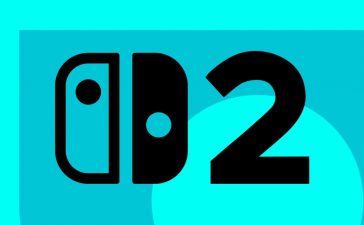
What is Kubernetes?
Kubernetes is an open-source platform for automating the deployment, scaling, and management of containerized applications. It was originally developed by Google and is now maintained by the Cloud Native Computing Foundation (CNCF).
Kubernetes provides a way to manage and orchestrate containers, allowing for easy scaling and management of the underlying infrastructure. This can be done on-premises, in the cloud, or in a hybrid environment.
What Are the Costs of Operating Kubernetes Clusters?
The main costs associated with running a Kubernetes cluster include:
- Infrastructure costs: This includes the cost of the underlying infrastructure, such as the servers, storage, and networking equipment, as well as the cost of running that infrastructure.
- Cloud provider costs: If you are running your Kubernetes cluster on a cloud provider like AWS, Azure, or GCP, you will incur costs for the use of their resources such as compute, storage, and network.
- Licensing costs: If you are using a commercial distribution of Kubernetes, such as Red Hat OpenShift, you may incur licensing costs.
- Management and maintenance costs: These include the cost of managing and maintaining the cluster, such as costs associated with monitoring, logging, and security.
- Resource costs: These include the cost of the resources consumed by the pods and services running on the cluster, such as CPU, memory, and storage.
- Data transfer costs: When running a cluster in a cloud provider, data transfer costs can be incurred when transferring data between regions or between the cloud provider and on-premises data centers.
It’s important to note that the costs of running a Kubernetes cluster can vary depending on the specific configuration and usage, and it’s important to continuously monitor and optimize cloud costs associated with Kubernetes clusters. Additionally, it’s important to understand the billing model of the cloud provider and the pricing of the different services and resources used in the cluster.
Best Practices for Reducing Kubernetes Costs
Using Kubernetes Dashboard
The Kubernetes Dashboard is a web-based user interface for Kubernetes that provides a visual representation of the state of the cluster and its resources. It can be used to monitor and manage the resources used by the cluster, including pods, services, and deployments.
This visibility into resource usage can help reduce the costs associated with running a Kubernetes cluster. However, it is worth noting that this dashboard needs to be used in conjunction with other tools and best practices to achieve effective cost optimization.
Here are several ways to optimize costs using Dashboard:
- Monitor the resource usage of pods and services and scale them up or down as needed. For example, if a pod is using more resources than it needs, it can be scaled down to reduce the number of resources consumed. On the other hand, if a pod is under-utilized, it can be scaled up to take advantage of the available resources.
- Monitor the state of the cluster to gain insight into potential issues, such as resource contention or failed pods. Identifying and addressing these issues can help reduce downtime and improve the overall performance of the cluster, ultimately reducing costs.
Using Cloud Saving Options Like Spot Instances and AWS Graviton
Spot instances are a type of cloud compute instance that allow you to bid on spare cloud capacity, at a discount of up to 90% compared to on-demand pricing. Spot instances are a cost-effective way to run batch jobs, big data processing, and other applications that are flexible in terms of when they run.
Another option of saving in the cloud is low-cost processors like Amazon Graviton processors are custom-designed processors that are built using ARM Neoverse cores and are optimized for running cloud-native workloads. They can provide a cost-effective alternative to x86-based processors for running Kubernetes clusters on AWS.
Here are some ways in which you can use Graviton processors and spot instances to reduce costs:
- Use Graviton processors for worker nodes: Graviton processors are optimized for running cloud-native workloads and can provide a cost-effective alternative to x86-based processors.
- Use spot instances for worker nodes: Spot instances can provide significant cost savings over on-demand instances, making them a cost-effective option for running worker nodes.
- Use node auto scaling groups: Node auto scaling groups allow you to automatically scale up or down the number of worker nodes based on the resource usage of the cluster.
- Implement a spot instance interruption handler: A spot instance interruption handler is a script that runs on a spot instance and terminates the instance or migrates it to an on-demand instance when the instance is about to be terminated.
Autoscaling
Autoscaling is a powerful feature in Kubernetes that can help to reduce costs by automatically adjusting the resources allocated to the cluster and its workloads. There are several different types of autoscaling in Kubernetes, including:
- Cluster Autoscaler: This is a Kubernetes controller that automatically adjusts the number of nodes in a cluster based on the resource usage of the pods running in the cluster. When the resource usage of the pods exceeds the capacity of the current number of nodes, the Cluster Autoscaler will add more nodes to the cluster, and when the resource usage falls below a certain threshold, it will remove nodes.
- Horizontal Pod Autoscaler (HPA): This is a Kubernetes controller that automatically adjusts the number of replicas of a pod based on the resource usage of the pod. When the resource usage of a pod exceeds a certain threshold, the HPA will add more replicas of the pod, and when the resource usage falls below a certain threshold, it will remove replicas.
- Vertical Pod Autoscaler (VPA): This is a Kubernetes controller that automatically adjusts the resources allocated to a pod based on the resource usage of the pod. It considers both CPU and memory usage to provide more resources to pods that are running out of resources and scale down resources for pods that are not using all their resources.
- Kubernetes Event-Driven Autoscaler (KEDA): This is a Kubernetes controller that allows for event-driven scaling of pods. It can automatically scale pods based on the number of events in a message queue, for example. It can be used to scale pods based on external metrics such as the number of messages in a queue, rather than just CPU/memory usage.
Downsizing Your Clusters
Downsizing clusters is one way to reduce the costs associated with running a Kubernetes cluster. This can be achieved by decreasing the number of nodes in a cluster, which will reduce the number of resources consumed by the cluster.
Here are some strategies to downsize a cluster:
- Right-sizing nodes: Identify and remove underutilized nodes, and adjust the size of remaining nodes to match the current resource requirements of the cluster.
- Remove unnecessary resources: Identify and remove resources that are no longer needed, such as pods and services that are no longer in use.
- Schedule non-critical workloads: Schedule non-critical workloads during off-peak hours when the cluster is less busy and can rely on fewer resources.
It is worth noting that downsizing a cluster can also have an impact on the availability and performance of the cluster, so it’s important to consider the trade-offs and to test the cluster thoroughly before and after downsizing. Additionally, it’s important to monitor the cluster continuously to ensure that the cluster is running optimally and to adjust resources as needed.
Rightsizing Your Workloads
Rightsizing workloads is another way to reduce costs associated with running a Kubernetes cluster. This can be achieved by adjusting the resources allocated to pods and services to match the actual resource requirements of the workloads.
Here are some strategies for rightsizing workloads:
- Set resource limits and requests: Use Kubernetes’ resource limits and requests feature to set the maximum and minimum resources that a pod or service can use, ensuring that it is using only the resources it needs.
- Use autoscaling: Autoscaling allows for automatic scaling of resources based on usage, which can help to ensure that the workloads are running at the optimal size and reduce costs.
- Use Quality of Service (QoS) classes: QoS classes can be used to assign different levels of priority to different pods and services, ensuring that critical workloads are allocated more resources than non-critical ones.
Conclusion
In conclusion, Kubernetes is a powerful platform for automating the deployment, scaling, and management of containerized applications, but it can also be expensive to run. By following the best practices mentioned in this article and implementing cost optimization strategies, it’s possible to reduce the costs associated with running a Kubernetes cluster. It’s important to monitor the cluster continuously and to adjust resources as needed to ensure that the cluster is running optimally and costs are minimized.
Author Bio: Gilad David Maayan
Gilad David Maayan is a technology writer who has worked with over 150 technology companies including SAP, Imperva, Samsung NEXT, NetApp and Check Point, producing technical and thought leadership content that elucidates technical solutions for developers and IT leadership. Today he heads Agile SEO, the leading marketing agency in the technology industry.












